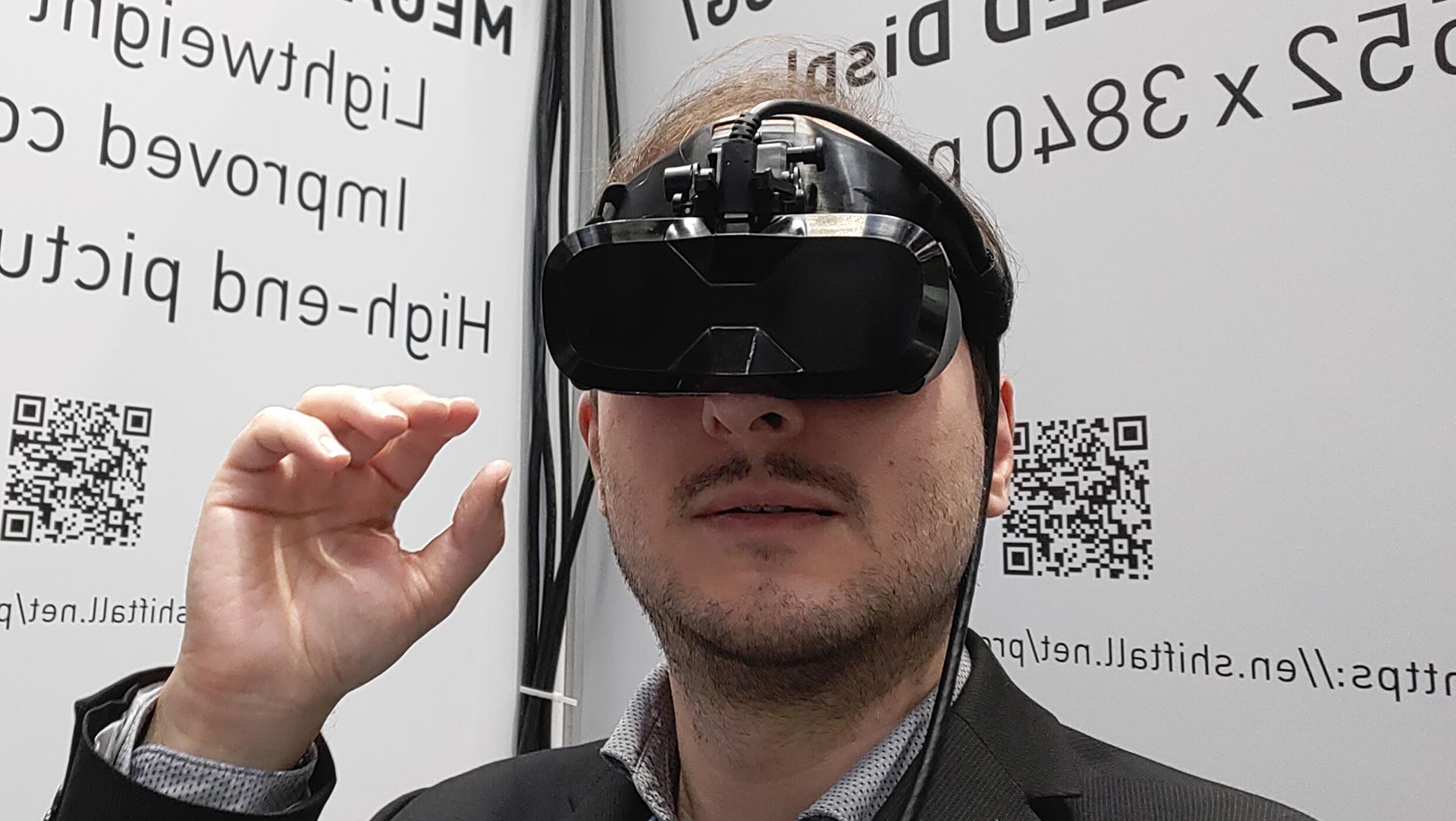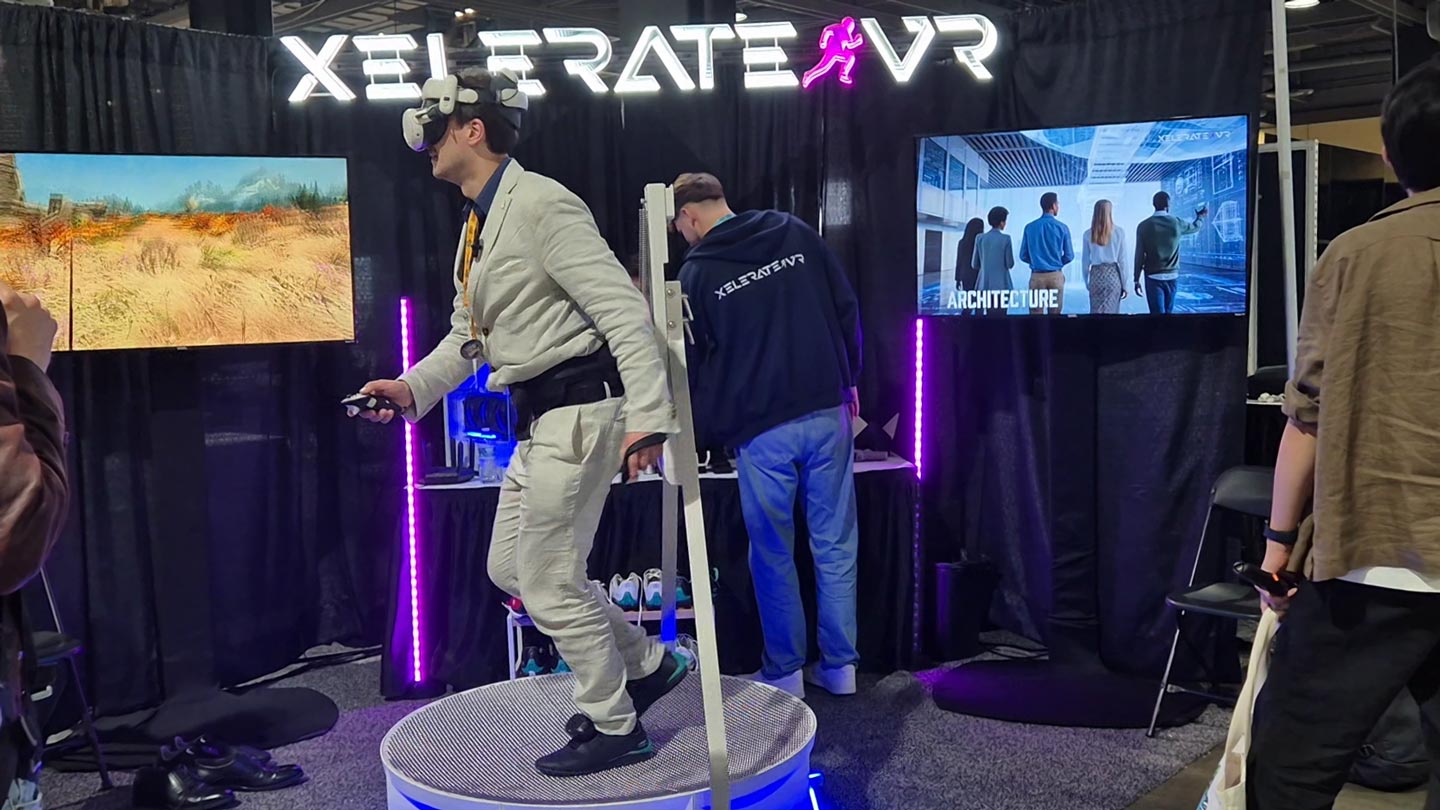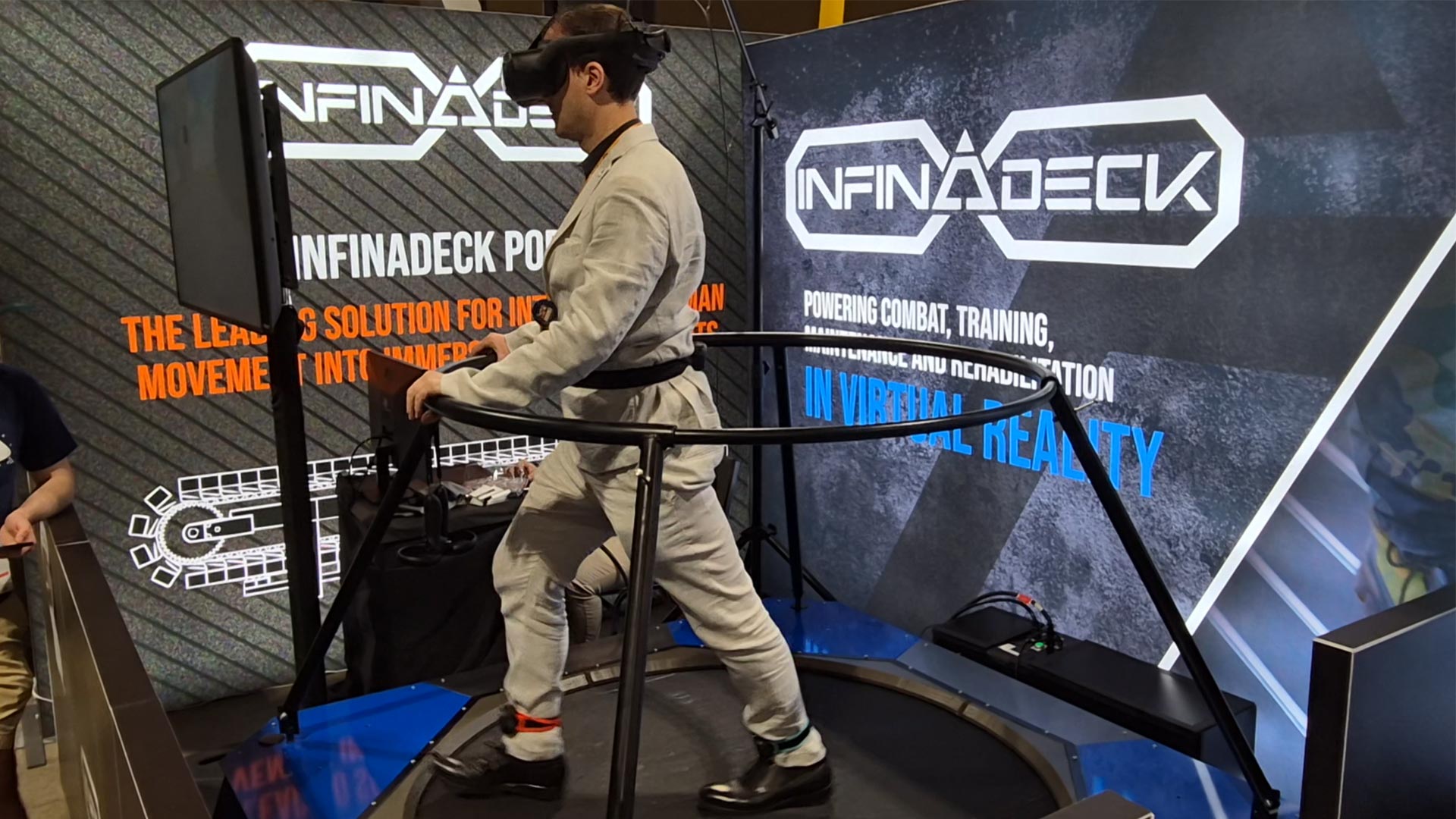AWE EU – MeganeX Superlight 8K hands-on: impressive resolution but at a price
Yesterday was my first day at AWE Europe, and I tried some very interesting devices there. My first test was with MeganeX Superlight 8K, Shiftall’s new headset with a very high resolution in a very compact design.
MeganeX Superlight 8K

Just a brief history of the MeganeX Superlight 8K, before we delve into the real meat of the hands-on. A few years ago at CES, a steampunk-looking small headset by Panasonic grabbed the attention of the whole VR press. That prototype evolved into a headset developed by a subsidiary company of Panasonic, called Shiftall (a company for which is very important to remember that the “f” comes before the “t” and not vice versa). The headset was called Shiftall MeganeX: it had not the previous steampunk look but it still was a very compact headset.
MeganeX was never shipped outside Japan, and the company then announced a new headset, MeganeX Superlight, which paired high-resolution displays (2K x 2K) with a very compact design. Now also this headset has been scrapped, and Shiftall has been acquired by another Japanese company called Creek & River Co., while still retaining collaborations with its mothership Panasonic.
Shiftall has so announced another headset now, MeganeX Superlight 8K, which features even higher resolution and a very high price. This is what I was able to try at the Panasonic booth at AWE Europe.
Specifications
These are some of the main specs of the MeganeX Superlight 8K, taken from its website:
- Display: 1.35 inch Micro OLED / 10 bit
- Resolution: 3552 x 3840 per eye
- Refresh Rate: 90Hz
- HDR: Supported
- Lenses: Pancake
- Interpupillary Distance (IPD): 58-72 mm (electrically adjustable)
- Focus Adjustment: 0D to -7D
- Audio:
- Integrated speakers: No
- Microphone: Built-in dual microphones with beam-forming
- Connectivity
- PC: DisplayPort + USB 2.0
- Headset side: USB Type-C
- Weight: Less than 185g
MeganeX Superlight 8K Hands-on
I was able to try two demos of this device, for a total time of around 10 minutes. Whatever consideration I’m writing here constitutes just my first impressions about it. To write a reliable review, I would need to have the device for a few days. So please take what I’m writing with a grain of salt.
Comfort

The MeganeX Superlight 8K isn’t called “Superlight” for a random reason: it is actually small and light. I was impressed by how this headset can be so small and lightweight yet so powerful in terms of resolution. I would like to make a comparison with the Bigscreen Beyond, but I haven’t had the occasion to personally test a Beyond, so I can not do that, sorry.


MeganeX claims on its website that the headset has a special design that guarantees no pressure on the face because there is a halo headband that you put around your head that takes care of keeping the headset still on your head. Then the headset is just rotated with a flip-up design so that it gently lies in front of your face. This claim is true, but it carries its own problems. The demo unit was clearly overused, so the flip-up juncture was a bit loose and the headset so was not stable in front of my eyes. I had to keep it still with one of my hands, which not only was uncomfortable, but also resulted in the occlusion of the SteamVR sensors, which made my display often become grey. So the idea on paper is good to deliver a headset that is not uncomfortable on your face and that you can flip up when you have to take a pause from VR, but in reality, it works only as much as the hinge properly does its job, and if over time it becomes loose, then you have a problem.

The headset features two little dials on the bottom, one on the left and the other on the right corner so that you can adjust the focus for both eyes. I performed this operation pretty fast, closing before one eye and then the other one. After that, I had the whole scene in focus.
Visuals
Given the high resolution of the display, visuals are where I concentrated my attention the most during the hands-on. Let’s start from the bright side of them: the resolution is literally incredible and so are the colors. I could perceive no screen door effect (SDE is almost gone already on Quest 3, and this headset has 3x of the pixels of the Quest) and everything looked very crisp. Thanks to the OLED displays, the colors were very bright and the black pixels truly looked black and not greyish like on LCD headsets. I was impressed by this, the visuals were amazing. For comparison, the BigScreen Beyond has 2560 x 2560 pixels per eye, so in this category of compact headsets, the MeganeX SuperLight 8K, with its 3552 x 3840 pixels per eye, truly shines.

But I couldn’t avoid noticing some issues, though: first of all, there was a constant Barrel distortion I noticed in the imagery. The first unit I tried was showcasing a 360 video and this effect was very noticeable (maybe there was something wrong with the device or the video playback). The second unit I tried was showing a 3D environment I could navigate in and the effect was much less evident, but if I attentively looked at some straight lines, I could perceive it. Then the lenses gave a good image in the center, but the periphery of them showed clear aberrations signs, mostly spherical, but also a little bit on the chromatic side. As long as I looked straight, things were fine, but if my eyes started wandering around too much, the effect was evident. The eye box didn’t look too small. Regarding the FOV, I honestly didn’t pay much attention to it, but it looked a bit less than the one on the Quest 3 headset I usually employ. I guess FOV is perceived as a pain point for this headset because it is the only specification not listed on the website.
Audio
No experience I’ve been offered had audio. The headset doesn’t feature integrated audio and the website invites users to attach headphones to the USB-C port.
Tracking
MeganeX Superlight 8K works with SteamVR tracking, which we all know is fantastic. The problem with such a small device is that being small, it offers few reference points to the tracking, so as long as something is occluding the headset, the tracking starts having issues. This is what was happening when I grabbed it with my right hand to keep it still: the headset started having huge tracking problems (probably also because of bad positioning of the base stations in the booth). This didn’t happen with my Vive, because it was big enough that a grabbing hand was just occluding a tiny part of it. This usually shouldn’t be an issue, but I wanted to flag it to you anyway.
Mount

The headset can be worn on the head using the headband, or it can also be installed on a “theater handle” for casual quick usage. This is very good for public installations where people just have to try a quick viewing passive experience like a 360 video. You don’t want all people to wear the headset, with women also ruining their makeup. So you can make people just grab the handle and gently put the headset close to their face, for added hygiene and comfort. This is a smart solution.
PC requirements
The minimum PC requirements listed on the MeganeX 8K website mention an NVIDIA RTX3070 graphics card. During my tests, I’ve been told that the headset was connected to a laptop featuring a 4080 graphics card. I was experiencing some stutterings and the framerate wasn’t great. I’ve been told by the people at the booth that it is because laptops may have issues with this headset and it is better to use a Desktop PC. Given the very high resolution and the impossibility of using foveated rendering because of the lack of eye tracking, this headset requires a lot of computational power to work properly.
Price and availability
MeganeX Superlight 8K costs $1,899. It can already be ordered and shipping is expected for February-March 2025. The website claims that every order can not be canceled and refunded. Maybe before buying it, just make sure that MeganeX is releasing this device for real and does not cancel it as it did for the first two.
Of course, the price does not include other accessories, like SteamVR base stations, controllers, or audio headphones.
Final considerations

MeganeX Superlight 8K is a device that features some evident design choices that Shiftall decided to make. The company focused a lot on resolution and clarity and on this side it delivered incredibly well. Also, the size seems to be one of their main goals, and the headset is small and lightweight as advertised.
But these choices led to compromises on many other sides: the headset is incredibly expensive and it also requires a very powerful and expensive desktop PC to run. It also doesn’t have integrated audio, so for now, it requires you to pair it with external headphones, with all the practical downsides it implies.
If Shiftall manages to solve the visual issues I found (and this is an important “if”), in particular the lens distortions, this may become a headset for people and companies that just want a device with stellar resolution and a compact form factor and are open to spending whatever amount of money for this. Maybe some firms that need some prototyping work can be interested in it. But this is literally a niche in the already niche market of PCVR.
Let me know what you think of the MeganeX Superlight 8K in the comments here below or on my social media channels! And subscribe to my newsletter so as not to lose the upcoming articles about the amazing hands-on sessions I had at AWE Europe!
Disclaimer: this blog contains advertisement and affiliate links to sustain itself. If you click on an affiliate link, I'll be very happy because I'll earn a small commission on your purchase. You can find my boring full disclosure here.



